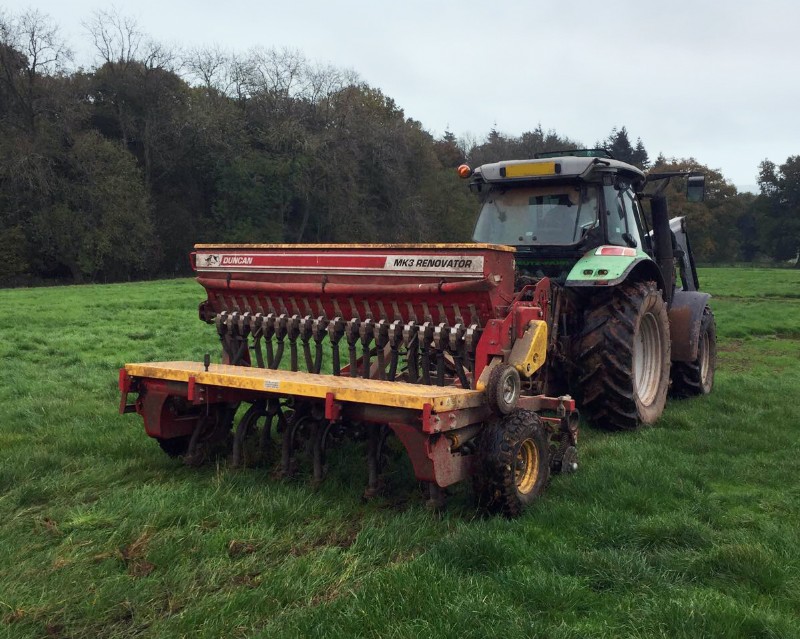

After what has felt like a very long, wet winter, we are receiving lots of enquiries about repairing grass leys that may have been poached by livestock. The high cost of housing livestock for longer than expected, exhausting over winter silage stocks and having to sacrifice spring cutting leys for grazing, as well as getting ewes and lambs out on fresh but wet pasture, has all added to the pressure this winter and early spring.
Overseeding can be a very useful way of repairing these damaged swards, as well as improving the productivity of old leys or permanent pasture. However It’s important to get the detail right, because new seeds will have a high degree of competition from existing species, making successful establishment more difficult.
Seed Mixtures
Westerwold Ryegrass: This will provide good bulk after only 10 weeks and sown at an overseeding rate of 8-10 kgs it will push up forage production for a one year period. This can be especially useful for increasing silage yields this spring and summer.
Ryegrass Overseeding Short Term 2-3 Year Mixture: This mixture is ideal for the improvement of silage leys as the upright structure of the Italian and Hybrid Ryegrass make it easier to mow. It will establish quickly and also boost later season, aftermath grazing.
Ryegrass Overseeding Longer Term 4-5 Year Mixture (With or without clover): This dual purpose mixture can be used for both grazing and cutting. The Hybrid and Perennial Ryegrass species will fit in well if patching up medium and longer term silage leys, as well as improving grazing pastures. This mixture produces a leafier plant which will provide good grazing forage.
Diverse Overseeding Mixture: Currently we are seeing an interest in using some of the more diverse forage species to help reduce the worm burden in livestock, by utilising anthelmintic plants; chicory, birdsfoot trefoil & sainfoin (sow on free draining soils only). Other species like plantain, yarrow and burnet are naturally high in minerals and tend to have greater drought tolerance or improve soil drainage due to their deep tap roots. These small seed species must be very shallow or surface sown. Some of the best establishments we have seen are on sites that have been out wintered by cattle.
5 Top Tips for Overseeding
- Ideally graze hard and harrow the existing sward vigorously before sowing in order to reduce competition and open up new space and soil for the new seeds.
- When sowing the new seeds be wary of sowing too deeply with aggressive direct drills. A quick emergence will help the new seeds compete with the old sward.
- After sowing, roll the area or tread in with livestock to lock in moisture and create good seed to soil contact. Stock can be left on the area for 3-4 days after sowing to further keep on top of the old sward (soil conditions allowing) but must be removed before the new seeds germinate.
- Before reintroducing stock, carry out the ‘pluck or rip test’. If you can pull up the new seedlings by the roots, allow seedlings further time to establish better root anchorage.
- Do not sow clovers and other small seeds too deeply, the number one cause of poor establishment!
Date Posted: 13th April 2018



